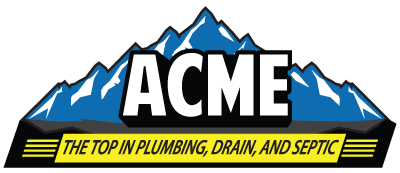Why DIY Drain Cleaning Might Be Making Things Worse
When faced with a slow or clogged drain, many homeowners instinctively reach for the nearest plunger, drain snake, or chemical cleaner. While DIY drain cleaning can seem like a quick and cost-effective solution, it often leads to more harm than good. In fact, many plumbing professionals end up repairing damage caused not by the clog itself, but by a well-intentioned homeowner trying to fix it.
If you’ve ever considered tackling a drain issue on your own, here’s why you might want to think twice—and how DIY efforts could actually be making the problem worse.
1. Chemical Cleaners Can Damage Pipes
One of the most common DIY mistakes is pouring store-bought chemical drain cleaners down a clogged sink or tub. While these products may provide temporary relief, they often cause long-term damage. The harsh acids or lye used in chemical cleaners can corrode metal and PVC pipes over time, weakening their structure and leading to leaks or costly replacements. In older plumbing systems, a single use can be enough to trigger a crack or burst.
Additionally, if the cleaner fails to dissolve the clog fully, it may sit in the pipe, continuing to eat away at it until professional help is called—often too late to avoid damage.
2. Improper Use of Tools
Another popular DIY method involves using a plumbing snake or auger to physically break up the blockage. While these tools can be effective in skilled hands, improper use can cause significant damage. For example, forcing the snake too hard into the pipe can scratch or puncture it, especially if it's an older or corroded line.
Worse still, homeowners who aren't familiar with their plumbing system might insert the tool into the wrong area, turning a simple clog into a more complicated issue.
3. Pushing the Clog Further Down
One of the most frustrating outcomes of DIY drain cleaning is accidentally pushing the blockage deeper into the plumbing system. This often happens when using makeshift tools like wire hangers or even plungers. Instead of removing the clog, these efforts compact it or move it to a less accessible part of the pipe, making it more difficult and expensive to resolve later.
4. Missing the Bigger Picture
A slow drain or frequent clog may be a sign of a larger issue, such as tree root intrusion, pipe corrosion, or a blocked main sewer line. DIY solutions often address only the symptoms, not the root cause. Without a professional inspection, underlying problems can worsen over time, leading to backups, flooding, or serious structural damage.
5. Void Warranties and Safety Risks
Some plumbing components come with warranties that can be voided if repairs or cleaning are attempted without professional assistance. Moreover, using chemicals or tools incorrectly poses safety risks—including burns, toxic fumes, and exposure to bacteria from raw sewage.
When to Call a Professional
If your drain is persistently slow, emits foul odors, or clogs frequently, it’s best to skip the DIY route and call a licensed plumber. Professionals have the experience, tools, and technology—such as video inspections and hydro-jetting—to diagnose and fix the issue safely and effectively.
DIY drain cleaning may offer a quick fix, but it often comes with hidden risks. By relying on professional services, you can protect your plumbing system, avoid unnecessary damage, and ensure that the real problem is resolved—without making it worse.
